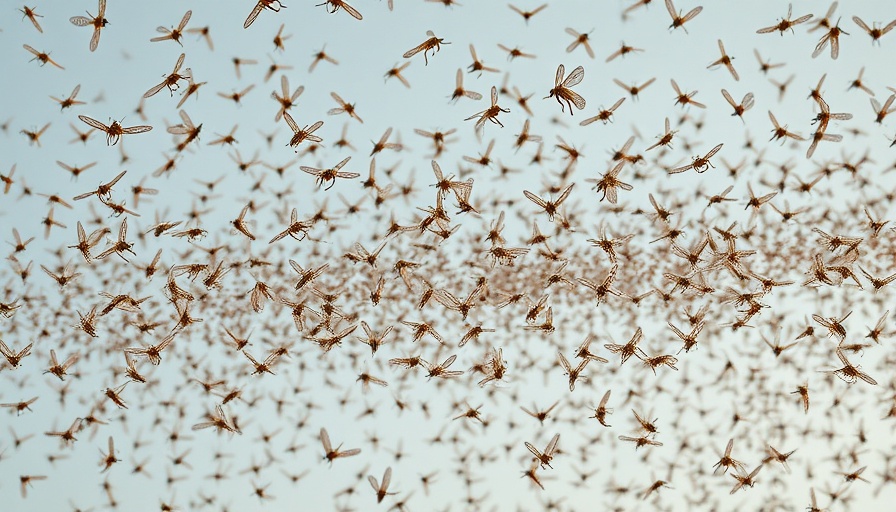
Understanding the Gnat Invasion in Your Home
Gnats, often dismissed as mere nuisances, can significantly disrupt the comfort of our home environments. Commonly appearing in swarms, these tiny flying insects can thrive in damp conditions, particularly in households with indoor plants, compost heaps, or overripe fruits. Understanding the ecology of gnats not only fosters better pest management but also enlightens us on their role in the ecosystem.
Identifying the Different Types of Gnats
When dealing with gnats, knowledge is your best weapon. There are various types of gnats, including fungus gnats, fruit flies, and drain flies. Fungus gnats breed in damp soil, whereas fruit flies are attracted to decaying fruits. Educating yourself about their specific habitats allows for targeted removal strategies, proving crucial for effective DIY home cleaning and maintenance.
Strategies to Deter Gnats
Preventing gnat infestations starts with eliminating conducive conditions for their breeding. Here are some proven methods for keeping gnats at bay:
- Limit Overwatering: Fungus gnats thrive in soggy soil. Water your houseplants only after the top layer of soil has dried out to reduce their population.
- Keep Produce Covered: Gnats are attracted to ripe fruits and vegetables. Use covered containers to minimize exposure.
- Maintain Clean Drains: Regularly clean kitchen and bathroom drains, as these are common breeding grounds for drain flies.
The Natural Approach to Gnat Removal
While chemical solutions may offer quick fixes, embracing natural approaches to gnat removal can be both eco-friendly and effective. For instance, a mix of vinegar and dish soap can create a trap that lures gnats in, thanks to its appealing scent, while the soap eliminates their ability to escape.
DIY Solutions for Gnat Issues
Getting creative with DIY home projects can be part of the solution. Here are a few DIY home cleaning hacks to eliminate gnats:
- Apple Cider Vinegar Trap: Fill a bowl with apple cider vinegar, cover it with plastic wrap, and poke small holes in the top. The gnats will be attracted to the vinegar but won't be able to escape.
- Soap and Water Trap: Mix water and a few drops of dish soap in a bowl. Place it where you notice gnats; they will be trapped in the soapy water.
Maintaining a Gnat-Free Home: Long-Term Strategies
To enjoy a gnat-free living environment, it's essential to adopt long-term strategies, such as:
- Regularly Dispose of Garbage: Ensure doors of trash bins are secure and regularly empty them to avoid attracting unwanted pests.
- Utilize Natural Enemies: Predatory insects like ladybugs can keep plant pests in check, indirectly reducing gnat populations around plants.
The Importance of Understanding Nature's Balance
While gnats can be bothersome, they play a role in the ecosystem by contributing to the decomposition process and providing nourishment for various wildlife. Understanding their role can help you find a balance in managing these insects without compromising the health of your home environment.
Final Thoughts on Living Harmoniously with Your Environment
In conclusion, effectively managing and eliminating gnats requires a multifaceted approach that includes immediate actions and ongoing preventive measures. By applying the strategies mentioned above, homeowners can reclaim their spaces from these tiny intruders. Yet, it is also essential to embrace a mindset that respects the interconnectedness of living systems in our homes and gardens.
 Add Row
Add Row  Add
Add 




Write A Comment